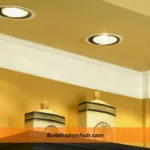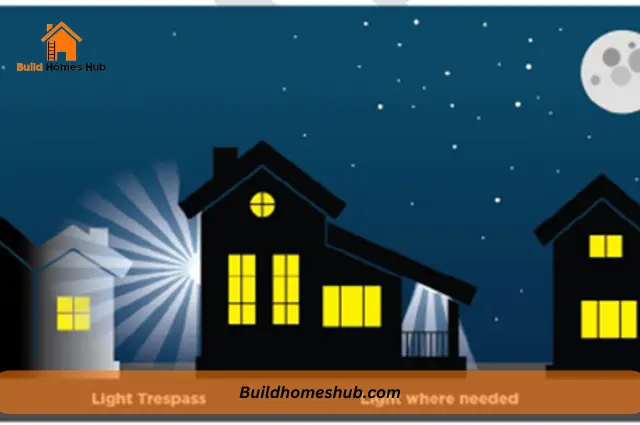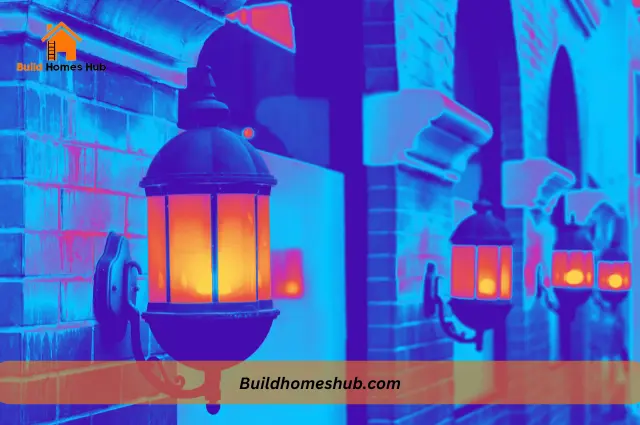Concrete roofs have existed for over a century, but they’re still not as common as other roofing materials. While there’s no denying that concrete tile roofs have some great benefits as well, this article will focus on the disadvantages of using concrete roofs.
First, the weight of concrete tile roofs is among the highest of any roofing material. Concrete tiles may be more durable than other types of tiles, but they’re also much heavier. This can increase labor costs and make it harder for homeowners to install them themselves. Concrete tile roofs can also get very expensive because they cost more than asphalt or shingle roofs.
Another disadvantage is that it’s possible to experience color fading over time due to exposure directly to sunlight so if this type of thing bothers you then maybe consider not using it at all. We’ll talk about the disadvantages of concrete roofs below.
Downsides of Using Concrete Roofs
1. Concrete tiles require maintenance
This is not to say that wood shakes, shingles, and slate don’t need care as well. But concrete tiles are a little more involved than your average roof material. They need cleaning and sealing regularly depending on the quality of their finish; they also have to be repaired or replaced when damaged. And then there are regular inspections required by law in some states.
2. Concrete tiles are heavy
Concrete tiles are heavy. They’re the most expensive type of tile, and they tend to be heavier than other types of roofing material. As such, installing concrete tiles requires special training and tools. If you don’t know what you’re doing with concrete tiles, then hiring a professional is a good idea
But even if you do hire contractors to install your concrete tiles and seal them properly, they can still be tricky to move once they’ve been installed in place. Say that one day down the line when all this hard work has paid off and your house has appreciated in value. Moving around a heavy flat surface isn’t easy.
3. Concrete tiles are expensive
Concrete tiles are a more expensive roofing material than asphalt shingles, clay tiles, or slate. They cost about 3-4 times more to install than asphalt shingles and up to 10 times more than other types of tile.
Some people think concrete roofs are cheap because they’re made from concrete. But the truth is that there’s a lot of labor involved in making them look nice and functional. Concrete actually costs more than steel when it comes to building materials like patio slabs or sidewalks, so you can imagine that you might pay even more for your roof.
4. Color fading is possible with concrete tiles
Although concrete tiles are a durable roofing material, color fading can be an issue. Color fading is more likely to occur if the tiles are exposed to the sun or not cleaned regularly. Additionally, color fading can happen if the tiles are not sealed properly.
5. Installation requires the help of professionals
Concrete roofs require professional installation. Installation of a concrete roof is a lengthy and involved process, requiring significant planning and knowledge. You should not try to do this yourself unless you’re certain you can handle it. I wouldn’t recommend starting with this project if you’ve never installed anything before.
The amount of time required for installation depends on the size of your home and how many people are involved in the process. For example, installing an entire roof made out of a six-inch (15cm) thick concrete slab requires more than twice as much labor compared to using thinner two-inch (5cm) slabs for your entire roof area.
6. Durability
Concrete tiles are durable but not as durable as some other tile materials. Concrete tiles can last up to 50 years with proper installation, care, and maintenance. On the other hand, most clay and ceramic tiles will last for at least 75 years if properly installed and maintained.
In addition, concrete is an alkaline material that can cause problems for people with allergies or asthma who live in homes with concrete roofs. If you want something more durable than a concrete roof but don’t want to go all out on slate or clay tile roofing, ask your contractor about installing rubber roofs instead.
Alternatives to Concrete Roofing
There are several alternatives to concrete roofs that may be more suitable for certain applications, depending on the needs and preferences of the homeowner. Some common alternatives include:
1. Asphalt shingles
Asphalt shingles are a popular choice for roofing because they are relatively inexpensive, easy to install, and available in a wide range of colors and styles.
Pros:
Asphalt shingles are relatively inexpensive, easy to install, and available in a wide range of colors and styles. They are also durable and can last for 20-30 years with proper maintenance.
Cons:
Asphalt shingles are prone to fading and may need to be replaced more frequently in hot, sunny climates. They also have a shorter lifespan compared to other roofing materials, such as metal or tile.
2. Metal roofing
Metal roofing is durable, long-lasting, and resistant to weathering. It is also energy efficient, as it reflects sunlight and can help keep a home cooler.
Pros:
Metal roofing is durable, long-lasting, and resistant to weathering. It is also energy efficient, as it reflects sunlight and can help keep a home cooler. Metal roofing is also low maintenance and can last for 50-100 years with proper care.
Cons:
Metal roofing can be more expensive than other roofing materials, such as asphalt shingles. It may also be noisy during heavy rain or hail storms.
3. Clay or ceramic tiles
Clay or ceramic tiles are made from natural materials and are known for their durability and longevity. They can also add a unique, rustic look to a home.
Pros:
Clay or ceramic tiles are made from natural materials and are known for their durability and longevity. They can last for 50-100 years or more with proper maintenance. Clay or ceramic tiles can also add a unique, rustic look to a home.
Cons:
Clay or ceramic tiles are heavy and may require additional structural support. They are also more expensive to install than other types of roofing materials.
4. Wood shingles or shakes
Wood shingles or shakes are a traditional roofing material that can add a natural, rustic look to a home. They require regular maintenance, such as staining or sealing, to protect against weathering.
Pros:
Wood shingles or shakes are a traditional roofing material that can add a natural, rustic look to a home. They are also relatively inexpensive to install and can be easily repaired or replaced if necessary.
Cons:
Wood shingles or shakes require regular maintenance, such as staining or sealing, to protect against weathering. They are also prone to rot, insect damage, and fire.
5. Rubber roofing
Rubber roofing is made from recycled rubber and is known for its durability and flexibility. It is also resistant to weathering and can be a good choice for flat or low-sloped roofs.
Pros:
Rubber roofing is made from recycled rubber and is known for its durability and flexibility. It is also resistant to weathering and can be a good choice for flat or low-sloped roofs. Rubber roofing is also relatively inexpensive and easy to install.
Cons:
Rubber roofing may not be as durable as other types of roofing materials, such as metal or tile, and may need to be replaced more frequently. It may also be prone to punctures or tears if it is not properly installed or maintained.
Conclusion
Concrete tile roofs are a great option for homeowners looking to add value to their homes while also getting a durable roof that will last many years. They are an excellent choice for those who want to create their own custom design, but they may not be right for everyone. If you’re still unsure if concrete tiles are right for your home, then make sure to contact our experts today.
I like to think I can help you with all the information you need on home renovations and DIY tips. You should subscribe.











